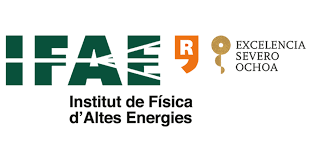Descripció del projecte
Machine Learning (ML) is one modern innovation that has helped people enhance not only industrial and Professional processes but also everyday living. ML has been used in multiple fields and industries and in particular in High Energy Physics (HEP). For example, in learning association, regression, object classification and image processing. Image recognition is one of the most common uses of machine learning, in which Convolutional Neural Networks (CNNs) are extensively developed in different fields. CNNs typically have 2D matrix input images which have to be recognized or classified.
The Hyper-Kamiokande (Hyper-K) detector, placed in Kamioka (Japan), will start operation in 2027. It will study neutrinos produced in J-PARC (Japan Proton Accelerator Research Complex), East of Japan, as well as neutrinos arriving from outside our atmosphere. The main focus will be the determination of CP violation, and will also be a detector capable of observing, far beyond the sensitivity of its antecessor (Super-Kamiokande), proton decay, atmospheric neutrinos, and neutrinos from astronomical sources. Hyper-K consists of a cylindrical tank with outer dimensions of 71m water depth x 68 m diameter. The tank is underground and located at a depth of 650m. Neutrinos traversing the detector have a small probability to interact with the water in the tank, in total around 250 kton. In these interactions a wide range of charged and neutral particles is produced depending on the energy of the neutrino and the underlying physics process. The charged particles outgoing from these interactions typically produce Cherenkov light when traversing the water, which is emitted in a cone along the particle trajectory. The walls of the tank are therefore covered with a high amount of suitable photosensors. The distribution of the light, its intensity and also the shape of the ring contain the information to determine the direction of the particle, identify the particle type and also its energy. Neutral particles cannot produce Cherenkov light directly, but they might undergo secondary interactions time-delayed in which charged particles are emitted which can produce Cherenkov light. High energetic gammas for example produce electron-positron pairs which each produce specific rings in the detector. All the rings produced as the consequence of one neutrino interaction might be overlaid. To complicate the situation further, in some cases, especially for astrophysical events such as Supernovae there will be many neutrino interactions on a very short time scale leading to possible time-wise overlap, “pile-up”, of neutrino interaction events. The working principle of the Hyper-K detector is comparable to a camera and it is natural to consider ML techniques for the automatic image recognition, the determination of the features of every ring and the corresponding event classification.
CNNs will be the fundament of the first part of this work supported by other ML techniques as for example Graph Neural Networks (GNN) and other classification algorithms. The second part of the project will consist on bringing ideas from quantum computing and explore its capabilities. Quantum mechanics has had a huge impact in many areas of science by providing a whole new mathematical framework that helped – and keeps helping – us to enhance our knowledge of Nature in a very accurate way. This theory is so powerful that its applications have soon reached the information science arena, giving rise to what could be – if not yet – a new technological revolution. Quantum effects have been recognized as a tool for computation that would not only help to keep up with Moore’s law of chip scaling as we can envisage transistors as small as one single atom, but also to find a more general representation of computation for a wide variety of hard tasks than the one offered by the classical Turing machine. With this promised enormous potential, proving quantum advantage in currently available quantum devices and developing the first real-world practical applications of quantum computing has become a race between large academic institutions and technology companies. This has particularly brought a notorious variety of quantum machine learning algorithms that exploit the quantum properties of a system with the hopes to improve the capabilities of classical machine learning approaches, being this one of the target applications to proof quantum advantage. Yet, many theoretical questions regarding the universality and efficiency of the different proposed quantum models remain unknown. In this project we will aim to theoretically investigate and simulate quantum machine learning models and algorithms under the framework of quantum computation. We will explore different algorithms based on three different paradigms of quantum computation: gate model, adiabatic model and quantum reservoirs. We will put a particular focus on devising different efficient data encoding strategies using the images collected from the Hyper-K detector as an input of the different models under study. We will then use this classification task as a benchmark to compare both between the different quantum algorithms and models of computation as well as comparing with the classical counterparts identified in the first part of the project in the pursue of identifying a potential quantum advantage in the intersection of machine learning and high energy physics.



